Kurotaki: Beautiful Mountain Village in Southern Nara
2023/04/19
In this blog post, we will briefly take a look at Kurotaki Village in Nara Prefecture, highlighting some of the sightseeing attractions that can be found there.
Kurotaki Village is located in the southern mountains of Nara Prefecture, beyond access by train, making it a place that often gets overlooked by international visitors. Like many smaller villages in this area, it is battling the consequences of population loss, and attempting to attract more tourists through a variety of interesting ways. Visitors to Kurotaki can anticipate exploring a fascinating historical landscape made up of beautiful natural scenery, countryside charm, and a quiet atmosphere separated from the usual crowds of people.

One of the more rugged sections of roadway located near the eastern border of Kurotaki Village.
Places of Note in Kurotaki Village:
Found between the ancient mountain temple districts of Yoshinoyama and Koyasan respectively, Kurotaki Village home to a wealth of deep history related to nature worship and Buddhism. It is a land of heavily forested mountains and clear rivers, where old temples and shrines stand along ancient paths, including the Omine-Okugake Pilgrimage Route, and the Kobo Trail.
Kurotaki’s Hokaku-ji Temple is said to have been founded by the famed priest Kobo Daishi in the year 895 CE. Access to this temple is possible by a 30-40 minute hike along a mountain ridge from Yoshinoyama’s Kinpu-jinja Shrine, which is an area that does have train access via Yoshino Station (albeit, after a roughly 7KM hike uphill).
For a full day of exploring on foot, from Hokaku-ji Temple you can hike down into Kurotaki Village and continue on foot all the way to the Yoshinoji Kurotaki Roadside Station (see below for more info), seeing many of the spots discussed within this article along the way. Conveniently, a bus departs from the Roadside Station that will take you to Shimoichiguchi Train station 3 times a day.
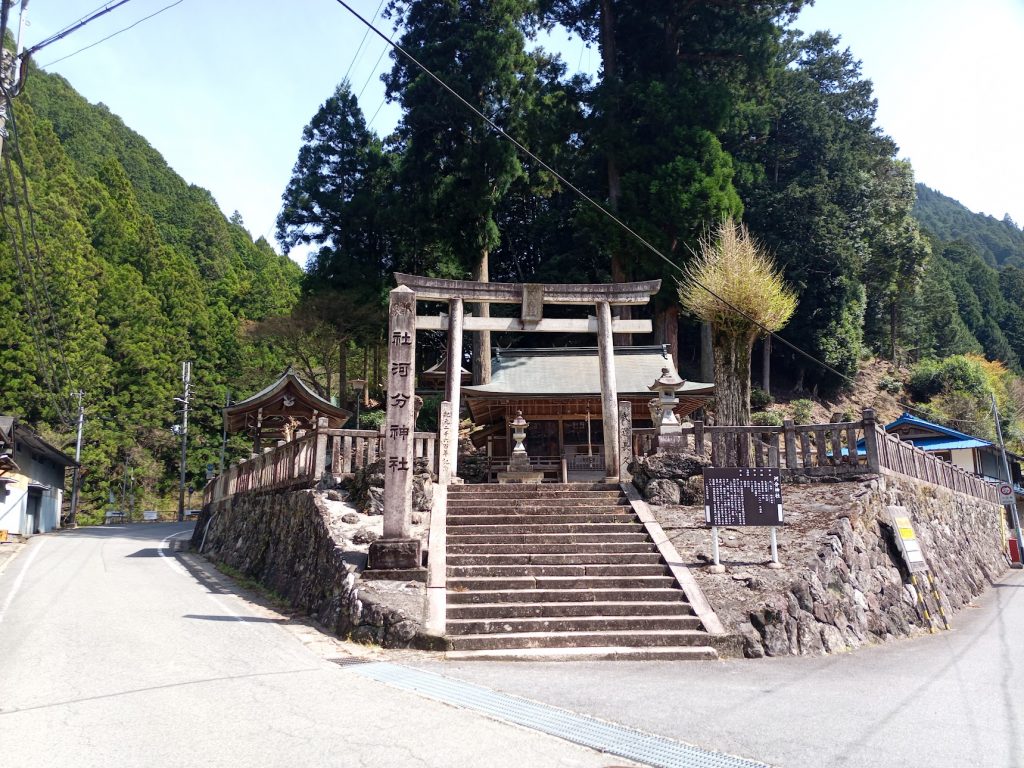
Kurotaki’s Kawawake Shrine.
The Kawawake Shrine, located at the confluence between the Nyu and Kawakami Rivers is thought to have been a historically important location to pray for rain and water distribution into the farmlands. Visiting the shrine today, the area in which it is located is very atmospheric, nestled at the crossroads of three mountain valleys and amid the traditional townscape of the village.
Upriver from the Kawawake Shrine are the Aka-iwa redrocks, where the stone which makes up the path of the Kurotaki river is all of a bright, almost vermilion tint of red. Next to these red rocks is the Killala Mori Aka-iwa cottages, where you can stay the night in the beautiful cedar forest of Kurotaki in your own cottage unit equipped with a private deck barbecue pit that overlooks the river below. There is also a communal bathhouse and even outdoor tennis courts nearby, if taking in the natural scenery is not enough of a draw already.
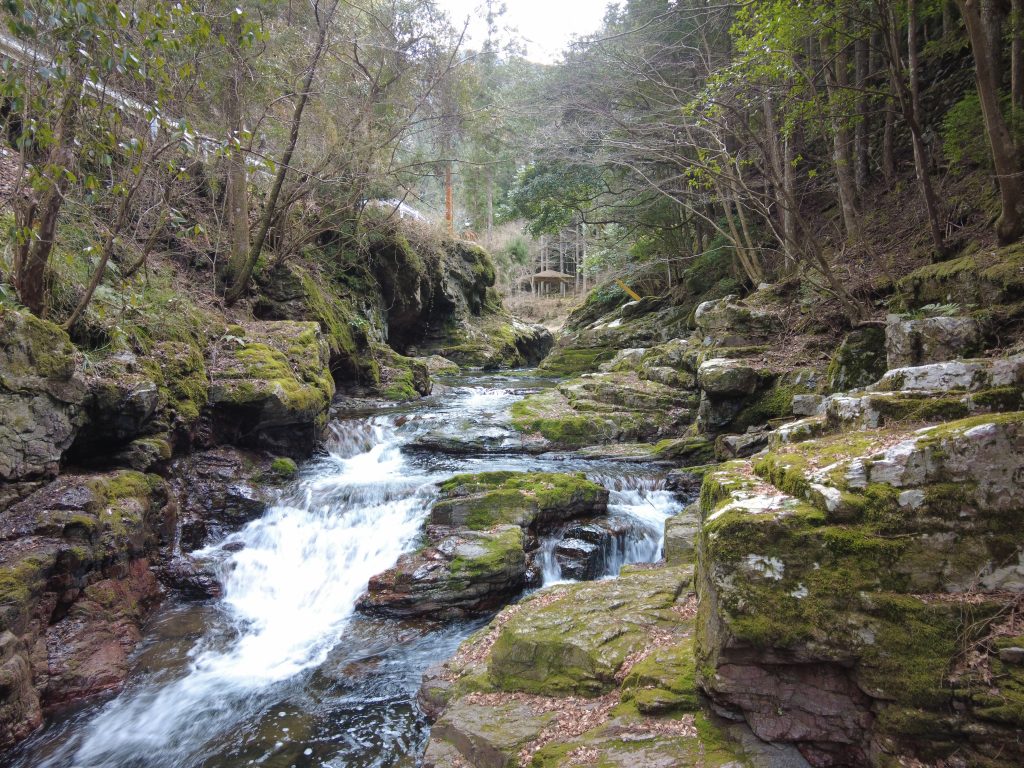
Area of the Kurotaki River where the Aka-iwa red rocks are located.
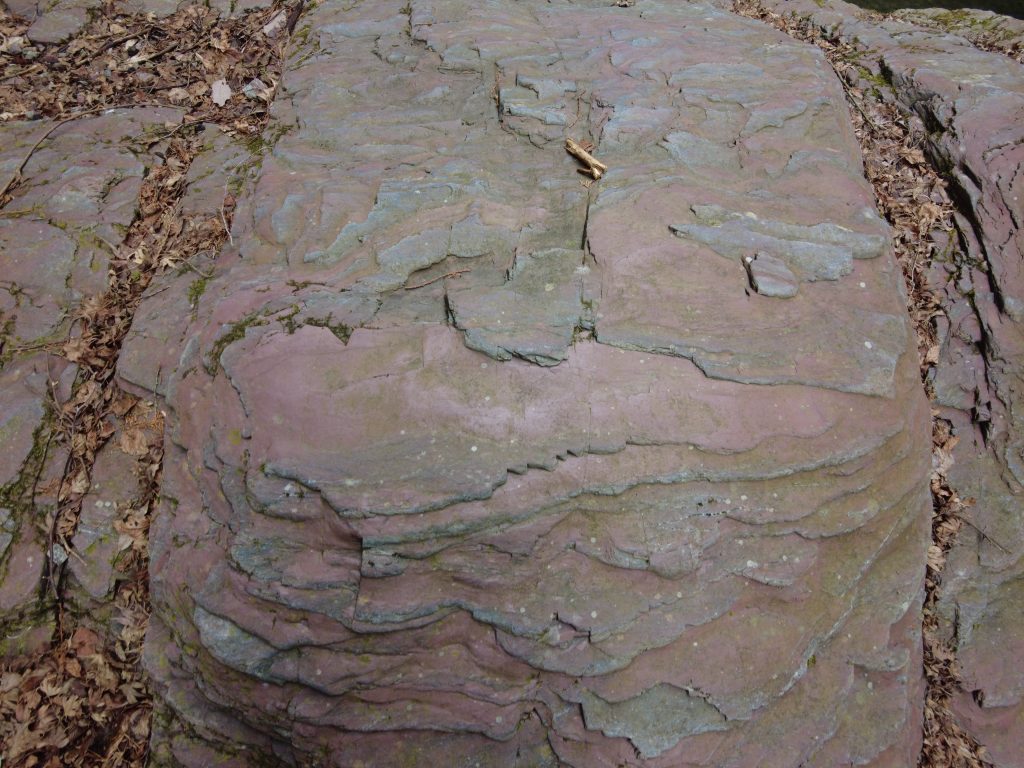
Aka-iwa red rocks.
Located at the southwestern end of the village is an area completely built around attracting tourists, the Kurotaki Monogatari-mura (“Kurtaki Forest Story Village”). It features a hotel, hot-spring facility, rentable BBQ pits, and space along the Nyu River built specifically for riverside camping and playing in the shallow water. During the hot months of the summer, many folks come from the lower regions to escape the heat, relax, hike, and enjoy delicious food.
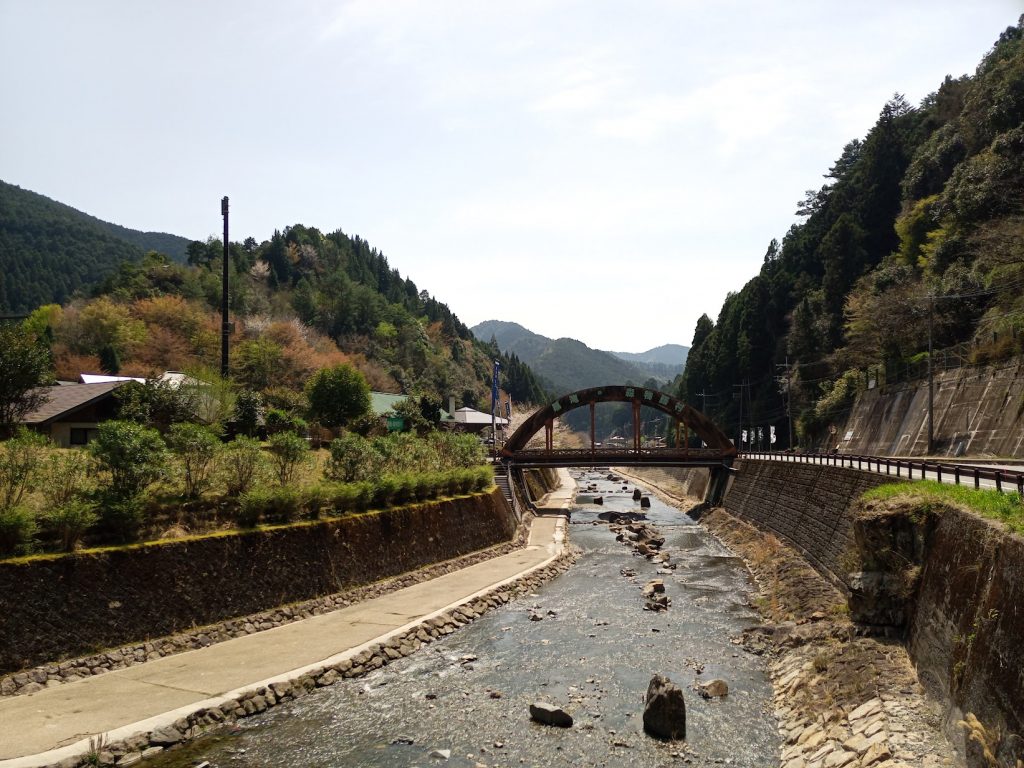
Bridge connecting to the Kurotaki Forest Story Village. The paved way alongside the Niu River can be used by visitors for picnic set ups.
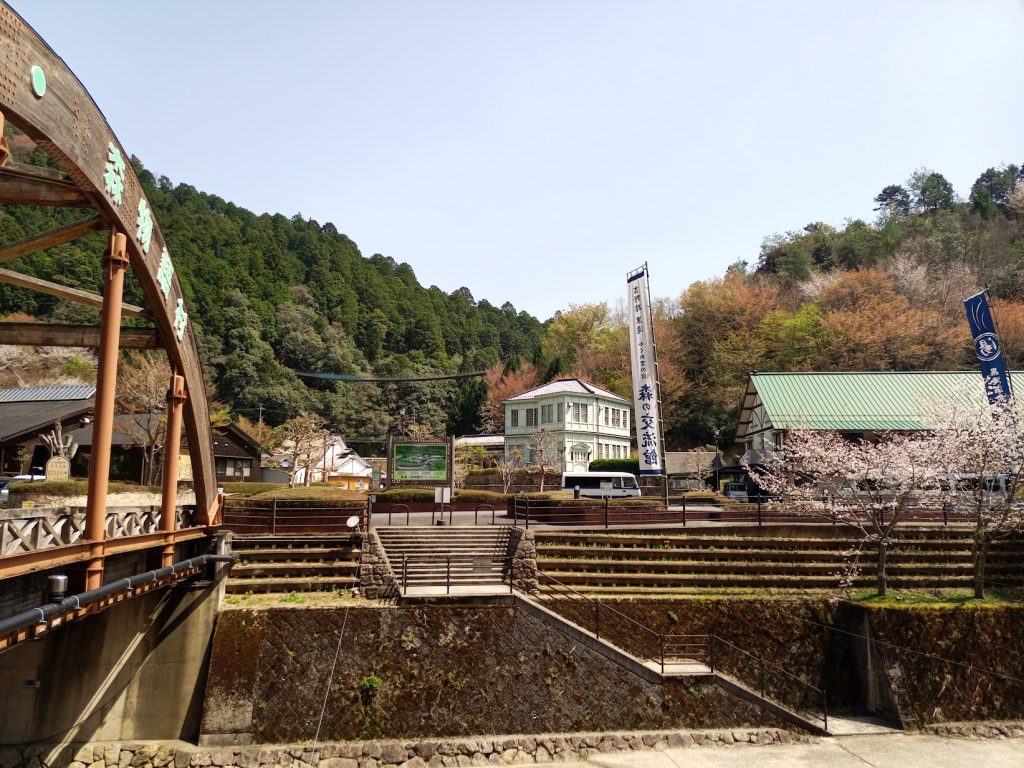
Kurotaki Forest Story Village with suspension bridge in the background.
Across from (and above) the Forest Story Village is a long suspension bridge that offers fantastic views over the surrounding mountain landscape and links to a hiking course into the mountains for those who want to get some exercise and enjoy a challenge.

The Kurotaki-tsuri suspension bridge is a nice feature for those seeking a bit of a thrill.
Finally, the Yoshinoji Kurotaki Roadside Station and Tourist Information Center is located alongside Route 309, the most used vehicle thoroughfare through the area. This spot includes a restaurant serving local specialty dishes (such as wild boar meat), a farmers market, convenience store, local goods shop (featuring many high-quality cedar & cypress woodcraft products), and food stands that sell all sorts of interesting snacks, from tempura shitake mushrooms to fresh konjac on a stick. This is also were the bus from Shimoichi Train Station stops in Kurotaki, making it the best point of access for those without their own vehicle transportation.

Konjac purchased nearby the roadside station in Kurotaki Village.
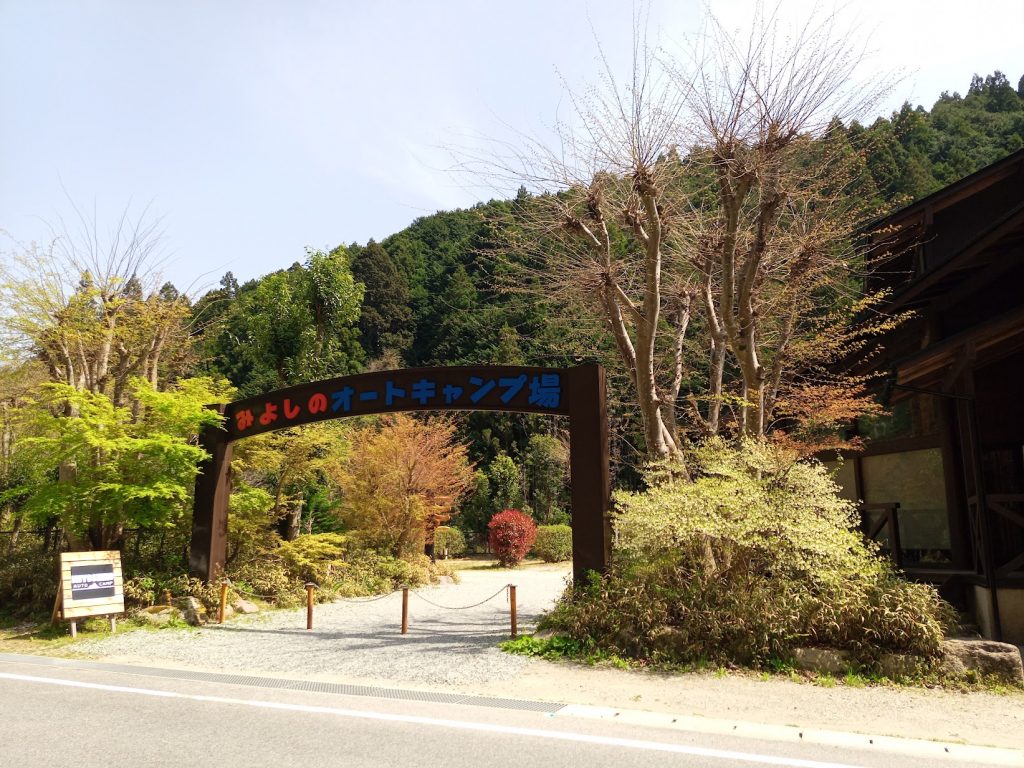
Auto Camp Miyoshino is a campground located not far from the Kurotaki Forest Park. It seems to open based on the season.
Besides the above listed places, Kurotaki features many more interesting locations for the avid explorer. For those who want to avoid the town and stick to the trails, the previously mentioned Omine-Okugake Pilgrimage Path runs along a high ridgeline at the eastern end of the village, along with the Kobo Trail, which is an old route connecting Yoshino to the ancient Buddhist mountain refuge of Koyasan. Both of these routes are accessible from Yoshino Station, though they certainly require a fair amount of effort to reach, requiring about 7KM of walking up into Yoshinoyama to reach the trails. There is a small visitors center in front of Yoshino Station where you can find English-language maps that should prove helpful in this regard.
Access:
The easiest way to access Kurotaki Village is by a bus which departs from nearby Shimoichiguchi Station and arrives in Kurotaki at the Yoshinoji Kurotaki Roadside Station. The bus only runs 3 times a day, so you will need to plan carefully to make sure you can catch it on the way back.
For more information on Kurotaki, or for guiding services in the area, please feel free to contact us here at Kansai Nara Treasure Travel.

01
FIND YOUR FAVORITE
TRIP ON OUR WEBSITE.
SEND US AN INQUIRY.

02
PERSONALIZE THE TRIP
TO YOUR INTERESTS
WITH OUR CONSULTANT.

03
20% DEPOSIT TO CONFIRM.
BALANCE PRIOR TO ARRIVAL.
PAYMENT BY CC OR TT.

04
WE WILL
MEET YOU
AT THE AIRPORT.

05
DISCOVER THE
TREASURES!